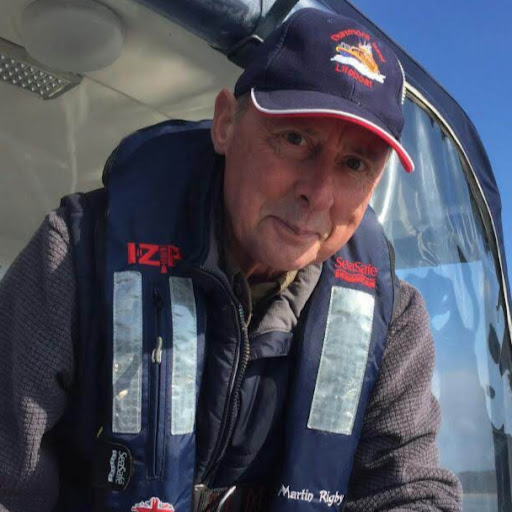James L Rigby
age ~73
from Pearsall, TX
- Also known as:
-
- James Lee Rigby
- Jim L Rigby
- Samantha Rigby
- Phone and address:
-
4913 Spur 581, Pearsall, TX 78061
(210)4523201
James Rigby Phones & Addresses
- 4913 Spur 581, Pearsall, TX 78061 • (210)4523201
- San Antonio, TX
- 1210 County Road 761, Devine, TX 78016
- Kent, WA
- Houston, TX
- College Station, TX
Us Patents
-
Process Of Manufacturing Pressurized Liquid Natural Gas Containing Heavy Hydrocarbons
view source -
US Patent:6539747, Apr 1, 2003
-
Filed:Jan 15, 2002
-
Appl. No.:10/050833
-
Inventors:Moses Minta - Sugar Land TX
Ronald R. Bowen - Magnolia TX
James R. Rigby - Kingwood TX -
Assignee:ExxonMobil Upstream Research Company - Houston TX
-
International Classification:F25J 300
-
US Classification:62620, 62623
-
Abstract:The invention relates to a process of manufacturing a pressurized multi-component liquid from a pressurized, multi-component stream, such as natural gas, which contains C components and at least one component of C , C , C , or C. The process selectively removes from the multi-component stream one or more of the C components that would be expected to crystallize at the selected temperature and pressure of the pressurized multi-component liquid product and leaves in the multi-component stream at least one C component. The multi-component stream is then liquefied to produce a pressurized liquid substantially free of crystallized C components. The removal of the C components can be by selective fractionation or crystallization.
-
Reliquefaction Of Boil-Off From Liquefied Natural Gas
view source -
US Patent:6672104, Jan 6, 2004
-
Filed:Mar 26, 2003
-
Appl. No.:10/397406
-
Inventors:E. Lawrence Kimble - Sugar Land TX
Ronald R. Bowen - Magnolia TX
James R. Rigby - Kingwood TX -
Assignee:ExxonMobil Upstream Research Company - Houston TX
-
International Classification:F25J 100
-
US Classification:62613, 62 482, 62614
-
Abstract:A process is provided for converting a boil-off stream comprising methane to a liquid having a preselected bubble point temperature. The boil-off stream is pressurized, then cooled, and then expanded to further cool and at least partially liquefy the boil-off stream. The preselected bubble point temperature of the resulting pressurized liquid is obtained by performing at least one of the following steps: before, during, or after the process of liquefying the boil-off stream, removing from the boil-off stream a predetermined amount of one or more components, such as nitrogen, having a vapor pressure greater than the vapor pressure of methane, and before, during, or after the process of liquefying the boil-off stream, adding to the boil-off stream one or more additives having a molecular weight heavier than the molecular weight of methane and having a vapor pressure less than the vapor pressure of methane.
-
Application Of High Integrity Welding And Repair Of Metal Components In Oil And Gas Exploration, Production And Refining
view source -
US Patent:8141768, Mar 27, 2012
-
Filed:Dec 21, 2006
-
Appl. No.:11/643528
-
Inventors:Steven J. Ford - Missouri City TX, US
Neeraj Thirumalai - Phillipsburg NJ, US
James Ronald Rigby - Kingwood TX, US
Mark Biegler - Houston TN, US
Narasimha-Rao Venkata Bangaru - Pittstown NJ, US
Jayoung Koo - Somerset NJ, US
Glen A. Vaughn - Ozark MO, US
Raghavan Ayer - Basking Ridge NJ, US
Douglas P. Fairchild - Sugar Land TX, US -
Assignee:ExxonMobil Research and Engineering Company - Annandale NJ
-
International Classification:B23K 20/12
-
US Classification:2281121, 228 21
-
Abstract:A method for welding and repairing cracks in metal parts is provided by subjecting the metal parts to be welded to friction stir welding and the cracks to be repaired to friction stir processing under conditions sufficient to provide a weld joint or crack repair having a preselected property or set of properties based upon the intended use of the weldment. The FSW and FSP methods are advantageous in joining and repairing metal structures and components in applications for natural gas transportation and storage, oil and gas well completion and production, and oil and gas refinery and chemical plants.
-
Process For Unloading Pressurized Liquefied Natural Gas From Containers
view source -
US Patent:61125288, Sep 5, 2000
-
Filed:Dec 16, 1999
-
Appl. No.:9/464987
-
Inventors:James R. Rigby - Kingwood TX
-
Assignee:ExxonMobil Upstream Research Company - Houston TX
-
International Classification:F17C 704
-
US Classification:62 481
-
Abstract:A process is disclosed for unloading a plurality of containers having pressurized liquefied gas contained therein. A pressurized displacement gas is fed to a first container or group of containers to discharge the liquefied gas therefrom. The displacement gas is then withdrawn from the first container or group and it is separated into a first vapor stream and a second vapor stream. The first vapor stream is heated and passed to the first container or group. The second vapor stream is fed to a second container or group to discharge liquefied gas therefrom. Communication between the first container or group and the second container or group is severed and the foregoing steps are repeated for all of the containers in succession, with only the last container or group emptied of liquid remaining at the pressure of the displacement gas, and all of the containers at the end of the process except the last container or group being filled with a lower pressure vapor.
-
Process Components, Containers, And Pipes Suitable For Containing And Transporting Cryogenic Temperature Fluids
view source -
US Patent:62128914, Apr 10, 2001
-
Filed:Jun 18, 1998
-
Appl. No.:9/099569
-
Inventors:Moses Minta - Sugar Land TX
Lonny R. Kelley - Houston TX
Bruce T. Kelley - Kingwood TX
E. Lawrence Kimble - Sugar Land TX
James R. Rigby - Kingwood TX
Robert E. Steele - Seabrook TX -
Assignee:ExxonMobil Upstream Research Company - Houston TX
-
International Classification:F17C 1300
-
US Classification:62 507
-
Abstract:Process components, containers, and pipes are provided that are constructed from ultra-high strength, low alloy steels containing less than 9 wt % nickel and having tensile strengths greater than 830 MPa (120 ksi) and DBTTs lower than about -73. degree. C. (-100. degree. F. ).
-
Method For Loading Pressurized Liquefied Natural Gas Into Containers
view source -
US Patent:62373471, May 29, 2001
-
Filed:Mar 10, 2000
-
Appl. No.:9/522676
-
Inventors:James R. Rigby - Kingwood TX
Brandon T. Stone - Houston TX -
Assignee:ExxonMobil Upstream Research Company - Houston TX
-
International Classification:F17C 704
-
US Classification:62 481
-
Abstract:A method is disclosed for loading pressurized liquefied natural gas (PLNG) into a plurality of containers containing pressurized vapor, wherein the containers are loaded in succession. The containers may be onshore or onboard a ship or other ocean transporting vessel. As a first step, the liquefied gas is introduced into the containers, thereby discharging the vapor therefrom. Vapor discharged from the containers is passed to auxiliary storage tanks comprising a first tank and a second tank. Vapor from at least one of the tanks is withdrawn and passed to a vapor utilization means such as a liquefaction plant for liquefaction of the vapor or to an engine or turbine for use of the vapor as fuel. Fluid flow to and from the first and second tanks is regulated to assure that the total flow rate of vapor to the vapor utilization means remains at a relatively constant flow rate.
Isbn (Books And Publications)

Driving Your Company's Value: Strategic Benchmarking for Value
view sourceAuthor
James S. Rigby
ISBN #
0471648558

Driving Your Company's Value: Strategic Benchmarking for Value
view sourceAuthor
James S. Rigby
ISBN #
0471708860


Handbook of Reagents for Organic Synthesis: Acidic and Basic Reagents
view sourceAuthor
James H. Rigby
ISBN #
0471979252

Name / Title
Company / Classification
Phones & Addresses
Owner
The Rigby Law Firm
Business Consulting Services Legal Services Office
Business Consulting Services Legal Services Office
600 Stewart St, Seattle, WA 98101
(206)4410826, (206)4410533
(206)4410826, (206)4410533
JAMES J. RIGBY, LLC
CASHMERE MANOR LLC
4331 S 239 Pl, Kent, WA 98032
Resumes

James Rigby
view source
James Rigby
view source
James Rigby
view source
James Rigby
view source
James Rigby
view sourceLocation:
United States

James Rigby
view sourceLocation:
United States
Googleplus

James Rigby
Work:
Self Employed - Slave

James Rigby

James Rigby

James Rigby

James Rigby

James Rigby

James Rigby

James Rigby
Myspace
Classmates

James Rigby
view sourceSchools:
McGaha Elementary School Wichita Falls TX 1986-1990
Community:
Ramon Michea, Carolyn Selby

James Rigby
view sourceSchools:
Seffner Christian Academy Seffner FL 1996-2000
Community:
Donna Saunders

James Rigby
view sourceSchools:
Northwestern Elementary School Marshall VA 2005-2009
Community:
Judy Pruitt, Jimmy Jim, Caroline Johnson, Alice Thornton, Lisa Strassner

James Rigby
view sourceSchools:
Yokota West Elementary School Yokota Air Force Base PA 1986-1990
Community:
Davida Fisher, Elaine Nichols, Rachel Smith, Ernest Besse

Seffner Christian Academy...
view sourceGraduates:
Sarah Corder (1996-1998),
Timothy Aldridge (1983-1990),
Rick Coyer (1995-1999),
James Rigby (1996-2000),
Jessica Smith (1996-2000)
Timothy Aldridge (1983-1990),
Rick Coyer (1995-1999),
James Rigby (1996-2000),
Jessica Smith (1996-2000)

McGaha Elementary School,...
view sourceGraduates:
James Rigby (1986-1990),
Danyaile Walker (1986-1990),
Ramon Michea Ramon Michea (1966-1970)
Danyaile Walker (1986-1990),
Ramon Michea Ramon Michea (1966-1970)
Youtube
Flickr

James Rigby
view sourceJames Rigby-

James Oliver Rigby
view source
Mark James Rigby
view source
James F Rigby Jr
view source
James Rigby
view source
James Rigby
view source
Christopher James Rigby
view source
James Rigby
view sourceNews

Mastro and wife arrested in France
view source- Three lenders pushed Mastro into bankruptcy in 2009. The most recent estimate of his debt to unsecured creditors is $250 million, and court-appointed trustee James Rigby has said those creditors will be lucky to get back more than a few pennies on the dollar.
- Date: Oct 24, 2012
- Category: U.S.
- Source: Google
Get Report for James L Rigby from Pearsall, TX, age ~73













